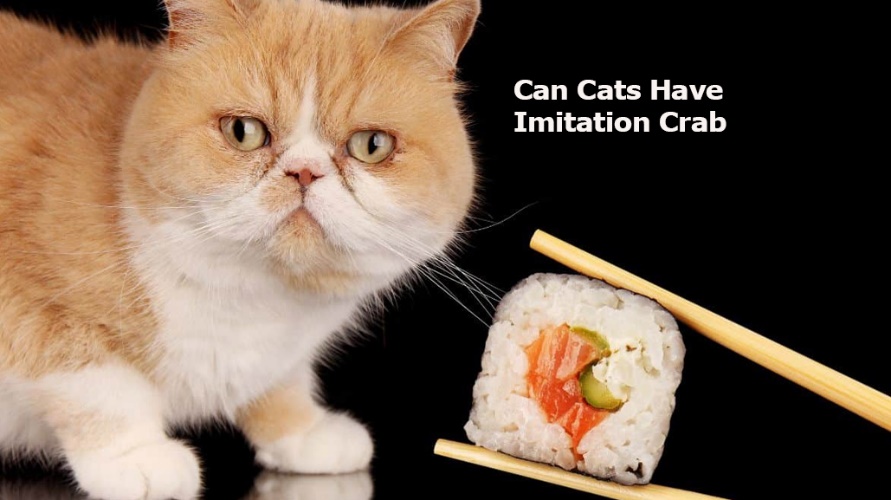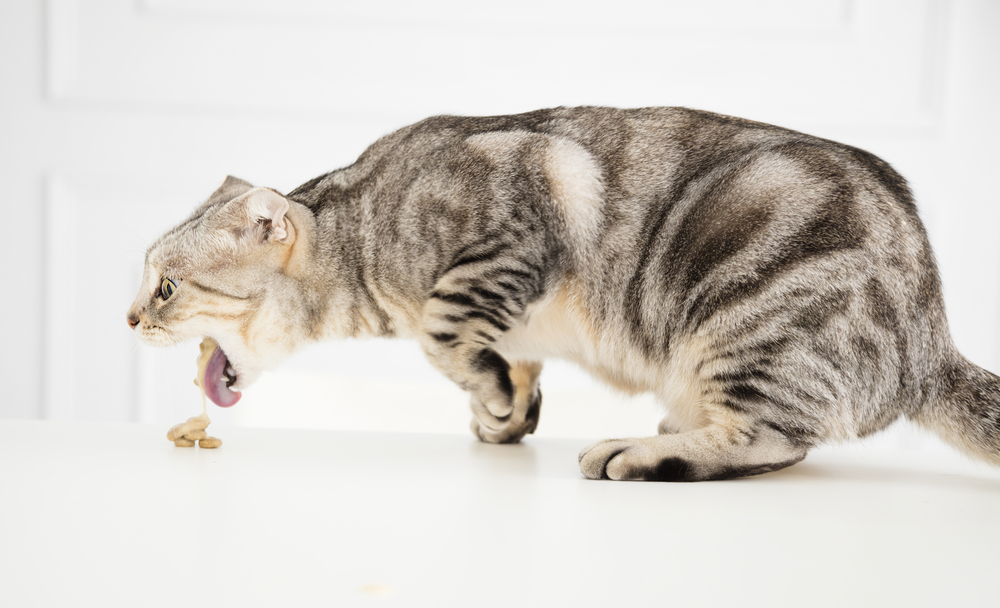We’ve all been there. You open a can of crab to make crab dip or maybe some tasty crab cakes, but your cat is already there, looking at you like he or she wants some crab. Luckily, not all cats are that way. In fact, most of them won’t even look at what you’re eating. What about giving your cat a piece of crab? Is it okay, or should you keep this meat away from them?
Being a wonderful fur parent, you looked it up first instead of guessing. Of course, cats can eat crab, but only sometimes and in small amounts. It depends on the type of crab and how it’s cooked. There is such a thing as too much of a good thing. In this article, we look at the right and wrong ways to feed our cats tasty crab meat.
It’s important to talk to your vet before giving your cat any new treats or human food, because it may not be good for them otherwise, especially if they already have health problems. It’s unlikely that your cat will reap any benefits from crab meat.
Although it’s fine to give them some as a treat once in a while, you should be careful not to give them anything that will make them sick, which brings us to our next question:
Can Cats Have Imitation Crab? Everything Cat Parents Need to Know
Imitation crab, sometimes called surimi, is a common ingredient in sushi rolls, crab cakes, seafood salads, and more. With its fishy aroma and flavor, it’s no wonder curious cats may try to sneak a bite when we’re not looking. But is imitation crab actually safe for cats to eat?
As cat parents, it’s our job to understand the risks and benefits of human foods before sharing them with our furry friends. So let’s dive into the details on imitation crab to decide if and how much cats can have as an occasional treat.
What is Imitation Crab Made Of?
Imitation crab is made of minced fish flesh that has been pulverized into a dough-like paste called surimi. The most common types of fish used are pollock, cod, and hake.
To turn this fish paste into imitation crab, manufacturers add flavorings, fish oils, eggs or egg whites, starch, salt, sugar, MSG, and colorings like titanium dioxide or carmine to mimic the taste, texture, and appearance of real crab meat.
Imitation crab tends to be lower in protein and healthy fats compared to real crab. It also contains carbohydrates, which are not found in regular crab The ingredient lists and nutritional values can vary between brands, but imitation crab is generally considered less nutritious than genuine crab meat
Potential Risks of Feeding Imitation Crab to Cats
While not overtly toxic, imitation crab does contain some ingredients that can be problematic when fed to cats:
- Salt
Excessive sodium intake can lead to dehydration and other health issues in cats. Imitation crab is quite high in salt, which is added to enhance the flavor.
- Carbs
The starchy fillers used to create the right texture in imitation crab can cause blood sugar spikes and weight gain when consumed in large amounts.
- Phosphorus
There is some evidence that elevated phosphorus levels could potentially contribute to kidney disease in cats. Imitation crab tends to be high in phosphorus.
- Additives
The preservatives, colorings and flavor enhancers added to imitation crab provide no nutritional value and are best limited in a cat’s diet.
Potential Benefits of Feeding Imitation Crab to Cats
While imitation crab has some drawbacks, it does provide a few positives if fed occasionally and in moderation:
-
Cats love the taste! The fishy, savory flavor can be an appealing treat.
-
It provides protein. While not a complete protein source, imitation crab does contain some protein from fish.
-
Mental stimulation. The unique taste and texture can provide mental enrichment.
-
Moisture. The water content helps add hydration to your cat’s diet.
Can Cats Eat Imitation Crab?
Based on the potential risks and benefits, the answer is yes, cats can eat imitation crab safely in small amounts as an occasional treat. While not toxic, it should not become a regular part of your cat’s diet.
Here are some guidelines for sharing imitation crab with cats:
-
Limit it to a few small bites 1-2 times per week at most
-
Avoid feeding it daily or in large portions
-
Cats with kidney disease or urinary issues should avoid it
-
Be sure to account for the extra calories if your cat needs to lose weight
-
Never give raw imitation crab, as it may contain harmful bacteria
-
Rinse off any seasonings, which could cause stomach upset
-
Supervise your cat to prevent choking on pieces
Best Practices For Feeding Imitation Crab to Cats
When sharing imitation crab, follow these tips:
-
Stick to reputable brands and examine the ingredients list
-
Select products with lower sodium and phosphorus levels when possible
-
Pick “lump” style over shredded to reduce choking risk
-
Remove any inedible skewers, shells, or seasonings
-
Cut or tear the pieces into bite-sized nibbles an inch or less
-
Place the pieces on a plate rather than offering directly from your hands
-
Provide just a few pieces in a serving and don’t leave it out unattended
-
Refrigerate any leftovers promptly and avoid feeding past the “best by” date
Signs Your Cat Shouldn’t Eat Imitation Crab
While most cats tolerate an occasional taste, look out for these signs your kitty should avoid imitation crab:
-
Dehydration
-
Increased thirst and urination
-
Weight gain
-
Diarrhea or vomiting
-
Allergic reaction
-
Kidney disease
-
Diabetes
-
Thyroid disease
-
Urinary crystals
-
Inflammatory bowel disease
If your cat exhibits any negative symptoms after eating imitation crab, stop serving it and consult your veterinarian if the issues persist.
Healthy Treat Alternatives to Imitation Crab for Cats
If your cat loves seafood flavors, you can try these healthier treats instead of imitation crab:
-
Flaked cooked salmon or tuna (no salt added)
-
Dried bonito flakes
-
Small amounts of cooked shrimp or clams
-
Cat food with fish recipes (like Weruva BFF line)
-
Freeze dried minnow cat treats
-
Lysine cat treats to promote immune health
Just be sure to introduce new foods slowly and avoid raw seafood due to bacteria risks. It’s also smart to verify any human seafood you share is cat-safe.
The Bottom Line
Overall, imitation crab falls into the “once in a while treat” category for cats. While not ideal as a steady part of their diet, a few bites here and there is fine for most kitties. Check the ingredients and select lower sodium options when available. But be sure to monitor your cat for adverse effects and take your vet’s advice on their unique dietary needs. With some common sense precautions, sharing the occasional piece of imitation crab can be a safe fishy treat your cat will love! Just offer it sparingly and stick to high quality cat food as the basis for their nutrition.

Is Crab Meat Good for Cats?
Cats are carnivores who have evolved to exist primarily on a diet that comes from prey. That means they need a lot of protein, some fat, and not many carbs, since they don’t really need carbs in their diet. Although crabs do contain some fat and a fair amount of protein, the question still stands: is it good for your cat?
While some cats can and do enjoy a small amount of crab every once in a while, that’s about all they should eat. If you cook crab meat the right way, it’s a great treat for our furry friends on special occasions, but it shouldn’t be their main source of food at all. Too much crab too often could make your cat sick and not help them in any way, but a little bit here and there won’t hurt them and is a tasty treat for a cat that is interested in new things.
One thing to keep in mind is the type of crab and how it’s prepared. If you want to give your cat crab meat, it should be cooked and have no seasonings or spices on it at all. It should be cooked plain. Make sure you take a piece of meat off the bone well before you season it. Many herbs and spices, like garlic, taste good to humans but are bad for pets.
Can Cats Eat Raw Crab?
This is an easy one—no. If you don’t heat-process the crab or other seafood, you shouldn’t give it to your cat because it could contain pathogens like bacteria, viruses, and parasites. This can cause your little kitty to get very sick, and nobody wants that. To make sure that none of those dangerous pathogens and oceanic parasites are left behind, you should always cook the meat. Just give them a little bit of what you’re having—the meat.
You shouldn’t let your cats eat the legs and shells because they are hard for them to chew and digest, could hurt their mouths and teeth, and could choke them. Most cats won’t try to eat the shell on purpose, but some cats may try to hold them in their mouths while licking off the taste, and they could eat some by accident. Pieces of the shell may lead to gastrointestinal blockage if swallowed. Shell can also be contaminated with various environmental bacteria, and licking it could lead to a stomach upset. But what about when it comes to imitation crab meat?.

Cats eating imitation of a crab
FAQ
Is imitation crab safe for cats to eat?
Are cats allowed to eat crab?
Is imitation crab OK for dogs?
What kind of seafood can cats eat?
Can cats eat imitation crab meat?
Imitation crab meat is usually made from something called surimi. It’s basically the same thing as a sausage or a hot dog, but with fish meat. The thing about imitation crab meat is that it is higher in carbs and the added salt and sugar content along with the preservatives and flavorings makes crab meat fairly inadvisable to feed your cat.
Is imitation crab bad?
It may be hard to tell if imitation crab is bad since it doesn’t contain the same ingredient as fresh crab. Imitation crab meat does not have a delightful, sweet flavor and crunchy texture like a freshly shelled natural lump or backfin crushed blue crabs. Be sure to read the ingredients on your can or package of crab meat carefully.
What is the difference between real crab and imitation crab?
With most foods, the processed equivalent has been stripped of the original, whole food’s nutritional value—and the same is true for imitation crab. Though both the real and imitation versions are low in calories and fat, the calories in real crab come mostly from protein, whereas the calories in imitation crab come largely from carbs.
Do cats eat crab?
We’ve all been there. You go to crack open a can of crab to make some dip, or maybe whip up some delicious crab cakes, and your cat is already there, eyeing you and half expecting to get some crab. Luckily, not all cats are like that, and most will show absolutely no interest in whatever it is you’re eating.
